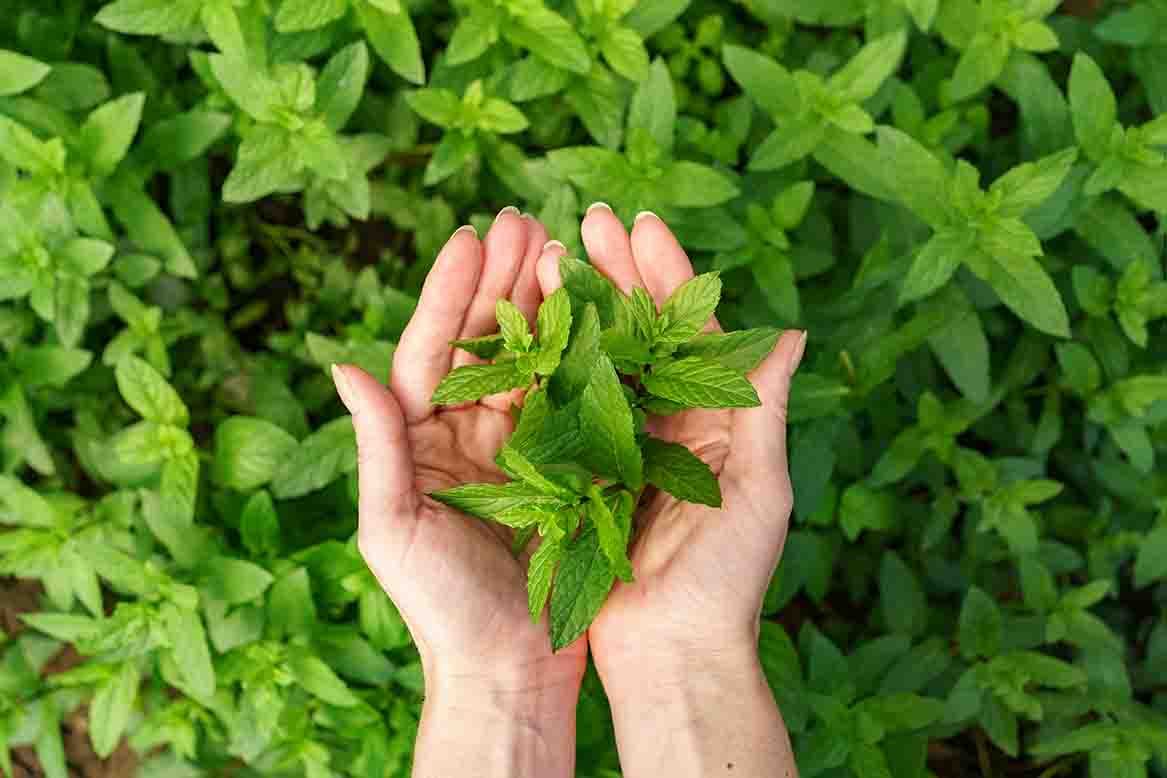Nutrition and Healthy Eating
Discover the Delight of Healthy Meals: Nourish Your Body and Thrive
Sed ut perspiciatis unde omnis iste natus error sit voluptatem accusantium doloremque laudantium, totam rem aperiam.

In a world filled with fast food and processed meals, finding ways to incorporate healthy choices into our diets is essential for our well-being. Healthy meals not only provide the necessary nutrients our bodies need but also contribute to our overall energy levels, mental clarity, and long-term health. Let’s explore the joy of incorporating healthy meals into our daily routines and discover a world of vibrant flavors and nourishment.
- Nutrient-Rich Ingredients:
Healthy meals are crafted using a variety of nutrient-rich ingredients. Fresh fruits and vegetables, whole grains, lean proteins, and healthy fats form the foundation of these meals. By incorporating a colorful array of fruits and vegetables, we can benefit from a wide range of vitamins, minerals, and antioxidants that support our immune system and promote optimal health. - Balanced Portions:
Achieving a balanced meal is key to nourishing our bodies. It involves combining different food groups in appropriate portions. Include a source of lean protein like chicken, fish, tofu, or legumes, along with whole grains such as quinoa or brown rice, and a generous serving of vegetables. This combination ensures a steady release of energy, supports muscle growth and repair, and provides essential nutrients. - Cooking Methods:
The way we cook our meals greatly impacts their nutritional value. Opting for healthier cooking methods such as steaming, grilling, baking, or sautéing with minimal oil helps retain the natural flavors and nutrients of the ingredients. Avoiding deep-frying and excessive use of oils can reduce unnecessary calories and unhealthy fats. - Flavorful Spices and Herbs:
Healthy meals don’t have to be bland or boring. Experimenting with a variety of herbs and spices can elevate the taste of your dishes. Add a pinch of turmeric for its anti-inflammatory properties, sprinkle herbs like basil, oregano, or cilantro for added freshness, or use garlic and ginger for an extra kick of flavor. These natural seasonings enhance the taste while providing additional health benefits. - Meal Planning and Preparation:
To make healthy eating a consistent part of your lifestyle, consider meal planning and preparation. Set aside time each week to plan your meals, create a shopping list, and prepare ingredients in advance. This approach saves time, reduces the temptation to opt for unhealthy choices, and ensures you have nourishing meals readily available even on busy days.
Embracing healthy meals is an investment in our well-being. By incorporating nutrient-rich ingredients, balanced portions, and flavorful spices, we can create a culinary experience that delights our taste buds and supports our overall health. Remember, healthy eating is a journey, and small steps towards choosing wholesome meals can lead to significant long-term benefits. So, let’s embark on this delicious adventure of healthy meals and nourish our bodies for a vibrant and thriving life.
Nutrition and Healthy Eating
Stevia vs Other Sweeteners

When it comes to choosing a sweetener, understanding the differences between stevia and other options is crucial for making informed dietary decisions. Here’s a comparison of stevia with several popular sweeteners, highlighting their unique characteristics, benefits, and potential drawbacks.
- Stevia vs. Sugar
Caloric Content: Stevia is a zero-calorie sweetener, while sugar contains about 16 calories per teaspoon.
Glycemic Index: Stevia has a glycemic index of 0, meaning it does not raise blood sugar levels, making it suitable for diabetics. In contrast, sugar has a high glycemic index, leading to spikes in blood glucose.
Health Implications: Using stevia can help reduce overall sugar intake, potentially lowering the risk of obesity and diabetes associated with high sugar consumption. - Stevia vs. Sucralose (Splenda)
Origin: Stevia is derived from the leaves of the Stevia rebaudiana plant and is considered a natural sweetener. Sucralose, on the other hand, is an artificial sweetener created by chlorinating sugar.
Sweetness Level: Stevia is approximately 200-300 times sweeter than sugar, while sucralose is about 450-650 times sweeter.
Health Concerns: Some studies suggest that sucralose may have adverse effects on gut health and could interfere with insulin response, whereas stevia is generally regarded as safe but may cause digestive issues in some individuals 125. - Stevia vs. Aspartame
Chemical Composition: Aspartame is an artificial sweetener made from two amino acids (aspartic acid and phenylalanine). Stevia is a plant-based sweetener.
Caloric Content: Both are low-calorie options; however, aspartame contains about 4 calories per gram but is used in such small amounts that it’s often considered calorie-free.
Health Considerations: Aspartame has been linked to various health concerns, including headaches and allergic reactions in sensitive individuals. Stevia does not have these associations but may cause gastrointestinal discomfort in some users 346. - Stevia vs. Erythritol
Source: Erythritol is a sugar alcohol found naturally in some fruits and fermented foods, while stevia comes from a plant.
Caloric Content: Erythritol has about 0.24 calories per gram, making it very low-calorie but not completely calorie-free like stevia.
Taste Profile: Both sweeteners have minimal aftertaste compared to other artificial sweeteners; however, erythritol can cause digestive issues in some people when consumed in large amounts 17. - Stevia vs. Monk Fruit
Origin: Monk fruit extract comes from the monk fruit (Siraitia grosvenorii) and contains mogrosides, which provide sweetness.
Sweetness Level: Monk fruit extract is also much sweeter than sugar (around 100-250 times), similar to stevia.
Health Benefits: Both sweeteners are natural and have no calories or significant effects on blood sugar levels. However, monk fruit can be more expensive and less widely available than stevia 48.
Conclusion
When comparing stevia with other sweeteners, it becomes clear that each option has its unique advantages and potential drawbacks. Stevia stands out as a natural zero-calorie alternative that does not affect blood sugar levels, making it an excellent choice for those looking to reduce sugar intake or manage diabetes. However, individual preferences regarding taste and potential digestive effects should guide personal choices when selecting a sweetener for everyday use.
Healthy Aging
9 Cooking Tips with Stevia
Edit Query
Here are 9 Cooking Tips with Stevia that will help you effectively incorporate this natural sweetener into your recipes while maintaining flavor and texture.
- Understand the Sweetness Ratio
Know the Conversion: Stevia is much sweeter than sugar, so you need significantly less. For example, 1 teaspoon of stevia powder can replace about 1 cup of sugar. Use conversion charts to guide you in your recipes14.
Experiment with Brands: Different brands of stevia can vary in sweetness and flavor. It’s beneficial to try a few to find the one that suits your taste best1. - Adjust for Texture
Add Bulk: Since stevia is used in smaller quantities, you may need to add other ingredients to maintain the volume in baked goods. Consider using applesauce, yogurt, or pumpkin puree to replace the bulk lost from sugar23.
Use Liquid Ingredients: When baking, if you’re replacing a cup of sugar with stevia, consider adding about 1/3 cup of liquid (like milk or water) to maintain moisture and texture2. - Monitor Baking Temperature
Avoid High Temperatures: Stevia can break down at high temperatures (above 400°F), which may affect the taste and sweetness. Use recipes that require lower baking temperatures for the best results2. - Be Mindful of Browning
No Caramelization: Unlike sugar, stevia does not caramelize or brown during baking. This can make it tricky to determine when your baked goods are done. Use a toothpick test to check for doneness instead2. - Use in No-Bake Recipes
Ideal for Cold Dishes: Stevia works exceptionally well in no-bake recipes like smoothies, puddings, and salad dressings. Its sweetness shines without the need for cooking5. - Combine with Other Sweeteners
Blend with Erythritol: For a more balanced sweetness and texture, consider combining stevia with erythritol. This blend can mimic the taste and mouthfeel of sugar more closely than stevia alone10. - Experiment with Flavor Pairings
Enhance Taste: Some flavors pair better with stevia than others. Consider adding spices like cinnamon or vanilla extract to enhance the overall flavor profile of your dish3. - Start Small
Gradual Adjustment: When first using stevia, start with a small amount and gradually increase it until you reach your desired level of sweetness. This will help you adjust better to its unique flavor profile2. - Store Properly
Keep it Fresh: Store stevia in a cool, dry place away from direct sunlight to maintain its potency and flavor over time.
By following these tips, you can successfully incorporate stevia into your cooking and baking routines, enjoying its sweet benefits without compromising on taste or health!
Healthy Aging
What is Stevia?

Introduction
Stevia, scientifically known as Stevia rebaudiana, is a perennial herb native to South America, particularly Paraguay and Brazil. This plant is renowned for its sweet-tasting leaves, which contain natural compounds called steviol glycosides, primarily stevioside and rebaudioside A. These compounds are significantly sweeter than sugar—up to 300 times sweeter—yet contain no calories, making stevia a popular choice for those seeking healthier alternatives to traditional sugar.
Key Characteristics of Stevia
Plant Description: Stevia is a small shrub that typically grows to a height of 30 to 80 centimeters (1 to 2.5 feet). It features elongated, aromatic leaves that are arranged oppositely along the stems.
Sweetness Profile: The sweetness of stevia comes from its glycosides, which do not raise blood glucose levels, making it suitable for diabetics and those managing their weight.
Culinary Uses: Stevia can be used in various forms—liquid extracts, powdered forms, or dried leaves—to sweeten beverages, desserts, and even savory dishes.
Health Benefits
Stevia has been touted for several health benefits:
Caloric Control: As a zero-calorie sweetener, it aids in weight management by reducing overall caloric intake.
Blood Sugar Regulation: Research indicates that stevia may help lower blood sugar levels and improve insulin sensitivity.
Dental Health: Unlike sugar, stevia does not contribute to tooth decay and may even inhibit the growth of harmful bacteria in the mouth.
Conclusion
With its long history of use and numerous health benefits, stevia has become a favored natural sweetener worldwide. Its ability to provide sweetness without calories or adverse effects on blood sugar makes it an appealing choice for health-conscious consumers. As interest in natural sweeteners continues to grow, stevia stands out as a versatile and beneficial option in the culinary world.
-

 Fitness and Exercise8 months ago
Fitness and Exercise8 months agoBest Habit for Healthy Life
-

 Healthy Lifestyle Habits9 months ago
Healthy Lifestyle Habits9 months agoThe Importance of Prioritizing Health and Well-being
-

 Nutrition and Healthy Eating1 year ago
Nutrition and Healthy Eating1 year agoThe Power of Hydration: Quench Your Thirst with Water
-

 Healthy Aging1 year ago
Healthy Aging1 year agoTips for Staying Hydrated:
-

 Healthy Lifestyle Habits9 months ago
Healthy Lifestyle Habits9 months agoBlood Sugar Levels for Optimal Health
-

 Healthy Lifestyle Habits9 months ago
Healthy Lifestyle Habits9 months agoHealthy Habit in Lifestyle
-

 Men's Health9 months ago
Men's Health9 months agoDive into the World of Health Stream: Empowering Wellness Through Digital Platforms
-

 Healthy Lifestyle Habits9 months ago
Healthy Lifestyle Habits9 months agoEnhancing the flavor and satisfaction of low-carb meals



